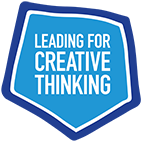PISA Creative Thinking - an opportunity for school and system leaders
Bill Lucas was co-chair of the Strategic Advisory Board of the PISA 2022 Creative Thinking Test and here he reflects on an exciting moment in the evolution of creative thinking in schools globally.
Read the OECD PISA 2022 Results (Volume III) Creative Minds, Creative Schools report online here.
The results of the first ever PISA test of creative thinking were launched at the OECD in Paris today. It’s a powerful signal to the world that creativity matters, that there is a global understanding of what it is and, most importantly, that it can be taught and assessed.
PISA measured the creative thinking skills of fifteen year olds in 64 countries but sadly none of the four home nations choose to participate. According to PISA creative thinking is ‘the competence to engage productively in the generation, evaluation and improvement of ideas that can result in original and effective solutions, advances in knowledge and impactful expressions of imagination’. Creative thinking is ubiquitous, occurring in all aspects of life, all subjects. For the purposes of the PISA test both written and visual expression were encouraged with some scenarios broadly located in science, some essentially just requiring common sense.
Five key leadership messages from the PISA Creative Thinking results
There are many messages we might take from the results; here are just five.
1. Strong performance in creative thinking and academic subjects is both possible and complementary.
Singapore students came top of the Creative Thinking ranking order, followed, in descending order, by Korea, Canada, Australia, New Zealand, Estonia and Finland. It is, PISA shows, a false binary position to suggest that doing well in creative thinking somehow distracts learners from success in core subjects. Students can flourish academically and in creative thinking.
2. High-performing systems in creative thinking adopt whole-system approaches to embedding, supporting and measuring creative thinking.
- Making creative thinking cornerstones of educational reforms, for example, in Denmark, Korea, Singapore, Canada and Australia.
- Supporting educators to recognise, develop and evaluate creative thinking by defining learning progressions or rubrics, as Australia, has done with its ‘critical and creative thinking learning continuum’.
- Creating specific opportunities in the curriculum for students to engage in interdisciplinary work, sometimes reducing the number of compulsory subjects (Korea), or offering more experiential courses as elective subjects (Korea, Denmark), or introducing dedicated interdisciplinary modules (Finland) or giving secondary students opportunities to choose interdisciplinary projects in authentic settings (Singapore), or providing funding to encourage partnership (the Creatives in Schools scheme in New Zealand).
- Encouraging accountability through assessment, for example in the state of Victoria in Australia where, since 2016, the Victorian Curriculum and Assessment Authority has administered Critical and Creative Thinking tests annually to a sample of schools.
3. Girls outperform boys in creative thinking in all tasks.
PISA 2022 results show that in no participating country/economy did boys outperform girls in creative thinking, and in all but three countries and economies - Chile, Mexico and Peru - the difference in average performance between boys and girls was statistically significant. This was especially the case for creative expression tasks and tasks building on others’ ideas.
4. Creative thinking requires engaged students and those systems which encourage this do better.
The results show that what students believe about their creative potential matters; those who believe they can develop their creative skills performed better in creative thinking. Sadly, students in many countries report that they do not find learning at school particularly enjoyable.
5. Schools and teachers can make a real difference.
They can choose certain pedagogies which encourage students to come up with original answers, express their ideas, are challenging, encourage multiple perspectives, leave space for the unexpected and leave time for reflection.
Reflecting together
1. Which of these messages strike you as most significant?
2. How might you use this information in your leadership?
3. What questions will you be asking candidates in your constituency as they ask for your vote?!
